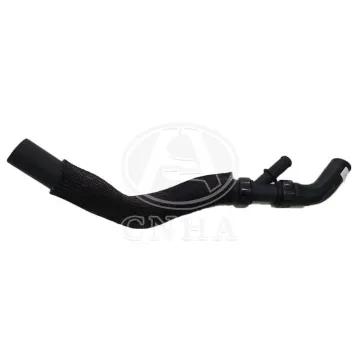What If I Do Not Fix The Radiator Hose?
Dec. 21, 2021
When performing a routine courtesy check on your vehicle, in addition to checking the oil, tyres, brakes and other safety devices, we also perform a radiator hose check. The radiator is one of the most important pieces of equipment in your vehicle, as it keeps the engine at its nominal operating temperature, which is between 195 and 220 degrees Fahrenheit (90 and 105 degrees Celsius).
The radiator hoses circulate coolant from the radiator to the engine components that need to be kept cool. Over time, radiator hoses will weaken. If not replaced in time, they can collapse completely, causing the engine to overheat and become inoperable. In extreme cases, collapsed hoses can cause the engine to burst. This article explains how to check your radiator hoses, which can help you prevent your engine from overheating.
Find your two radiator hoses. One reason radiator hoses are overlooked during routine car checks is that they can be difficult to reach.
Radiator Hose
The upper radiator hose connects from the radiator to the motor. You can usually see most of this hose. The lower radiator hose is more difficult to find. To find it, go under the car and look for the smaller diameter hose leading from the radiator to the hot wall of the car.
Visually inspect each radiator hose. The hose should not expand or rupture, both of which can lead to failure. Perform a squeeze test. When the engine gets hot after driving, squeeze the radiator hoses, paying particular attention to the areas where the hoses are bent.
Radiator hoses in poor condition feel very stiff, spongy or soft. You may find a soft spot rather than the whole hose being soft. The hose should be replaced with a soft hose or one with a soft spot. Check the clamps that connect the hose to the radiator and the engine. There are 3 different types of radiator hose connections, gear clamps, band clamps and wire clamps.
Gear clamps (sometimes called worm clamps) and band clamps (also called spiral clamps) are usually made of stainless steel and are wrapped around the hose. You can adjust these types of clamps using a screwdriver. Adjust the wire clamps with a pair of hose clamps. You can recognise these clamps because there are no screws to keep them tight.
Radiator Hoses
What if I don't fix my radiator hose?
If you are certain that your radiator hose is faulty or broken and you need to determine the overall cost of the radiator hose to determine if the main engine needs to be repaired or replaced, then you need to take steps that will allow you to continue driving safely. Even if you don't think the situation is bad, you shouldn't try to drive your car anywhere - even to a mechanic.
You should try to have your car towed to a local mechanic so that you can keep everyone safe and avoid taking risks when driving on the road. You don't want to end up taking your car to a mechanic or dealership and then have your car break down on the side of the road, damaging more parts and increasing the total cost of your radiator hoses.
It's also important to note that most of the signs of a damaged radiator hose are also the same as signs of a faulty radiator, a faulty gearbox or a faulty engine. If you ignore any of these signs, this can lead to more serious problems such as engine failure or radiator damage.
;If you want to get more information about the radiator hose cost, welcome to contact us today or request a quote.








